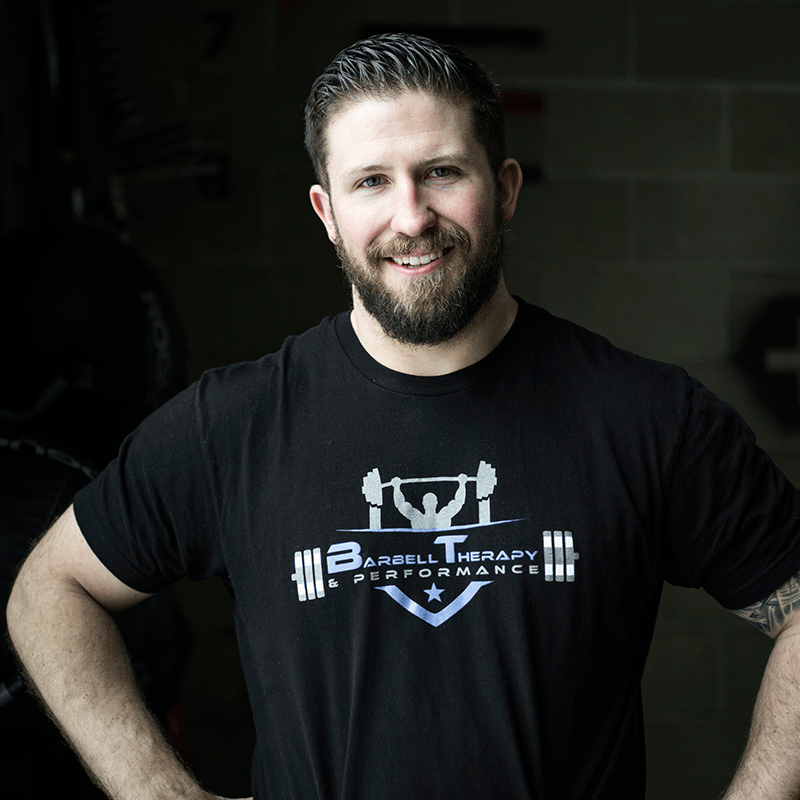What is Blood Flow Restriction Training? Pressurized cuffs are worn on proximal ends of limbs during exercise and will restrict the venous return of blood going back to the heart, leaving blood in the cuffed extremities for longer periods of time. This allows hormones and metabolites to pool and collect. This creates an anabolic environment that encourages muscles in the exercising limb to grow! For example, several weeks post-ACL surgery, BFR cuffs would be worn on both upper thighs AFTER checking with a doppler for the appropriate pressure, restricting venous return from the legs and then an exercise such as partial squats would be performed.
And the icing on the cake is these effects occur with very low loads and don’t require patients or clients to get under a heavy barbell to experience the muscle pumping feeling that is induced.
BFR is NOT a Cure-All: Blood flow restriction is not completely occluding arteries or venous return- as this could have serious health consequences. Blood flow restriction does not directly increase strength- it can however help hypertrophy muscles, which can then in turn help produce more force. In the short term, BFR has also been shown to decrease power output and proper recovery must be planned. BFR can also cause serious soreness following first use and implementation needs to be calculated- if you are rehabbing an athlete that needs to be ready to play in tomorrow’s game, maybe forgo BFR until the next treatment. BFR also compresses nerves and can slow nerve conduction velocity. BFR should not be used with new exercises patients or clients have never performed before, for safety reasons.
The biggest danger with BFR is over-prescribing exercise leading to rhabdomyolysis; this is when damaged muscle tissue releases its proteins and electrolytes into the blood and can be a serious health condition and even life-threatening.
Who is BFR right for? Strength training and bodybuilding clients with goals of hypertrophy. Rehab patients who can no longer lift heavy loads looking to build muscle; especially pre and post-surgical patients! Using BFR pre-operationally can help build up muscle mass before going under the knife and hopefully increase the likelihood of a positive outcome post-surgery!
General BFR Considerations: Keep in mind that this is not medical advice and general statements about how BFR could be applied. Healthy individuals with no contraindications to BFR could start using it for 15 to 20 minutes doing three to four compound exercises. First sets are usually above thirty reps and are done to fatigue the target muscles. In theory, this will shift the muscle fibers being used to primarily type two anaerobic fibers instead of the slow twitch type one fibers. The second and third sets are performed for between fifteen and twenty repetitions. BFR will increase general perceived exertion levels and will fatigue clients and patients much faster than they think will occur. You will likely never load BFR more than 20% of a patient’s approximate 1 repetition maximum weight when the cuffs are on and will frequently perform exercise at body weight with no external resistance.
Cardiac Response: When venous return to the heart is restricted, the heart will have to beat faster and harder to send out that lessened volume at a faster rate. This causes a higher cardiac response at lower loads. Positive exercise responses can even be seen when performing aerobic exercise at 40% of HR Max with BFR cuffs on! That may seem incredibly low intensity and boring, but that is how much BFR adds to training. If a client or patient has a history of cardiac, blood pressure or respiratory issues check with a qualified medical provider before utilizing BFR training.
Points of Diminishing Return: Once patients reach a tolerance to BFR and they can crank through a 30 to 40 minute session, it is time to consider initiating the transition back to traditional weight training. And the same can be said for fitness or aesthetic clients; further ways to advance training should be considered when BFR (under safe prescriptions) is no longer creating a response. The end goal should always be to get back under the barbell and lifting heavy weights!
Physical Therapy Considerations: Patients who would likely benefit from utilizing BFR are those pre and post-surgical and those connective tissue tissue injuries. The logic behind this is the increase in growth hormone and other metabolites that pool when using BFR will help stimulate increased healing and decrease perceived pain. The fact that BFR requires the patient to be active is also a big help! BFR can replace a lot of passive modalities and this can help empower our patients in leading them to realize that exercise is helpful for managing their symptoms on the road to recovery.
*Always check for contraindications before using BFR or see a licensed medical provider!


